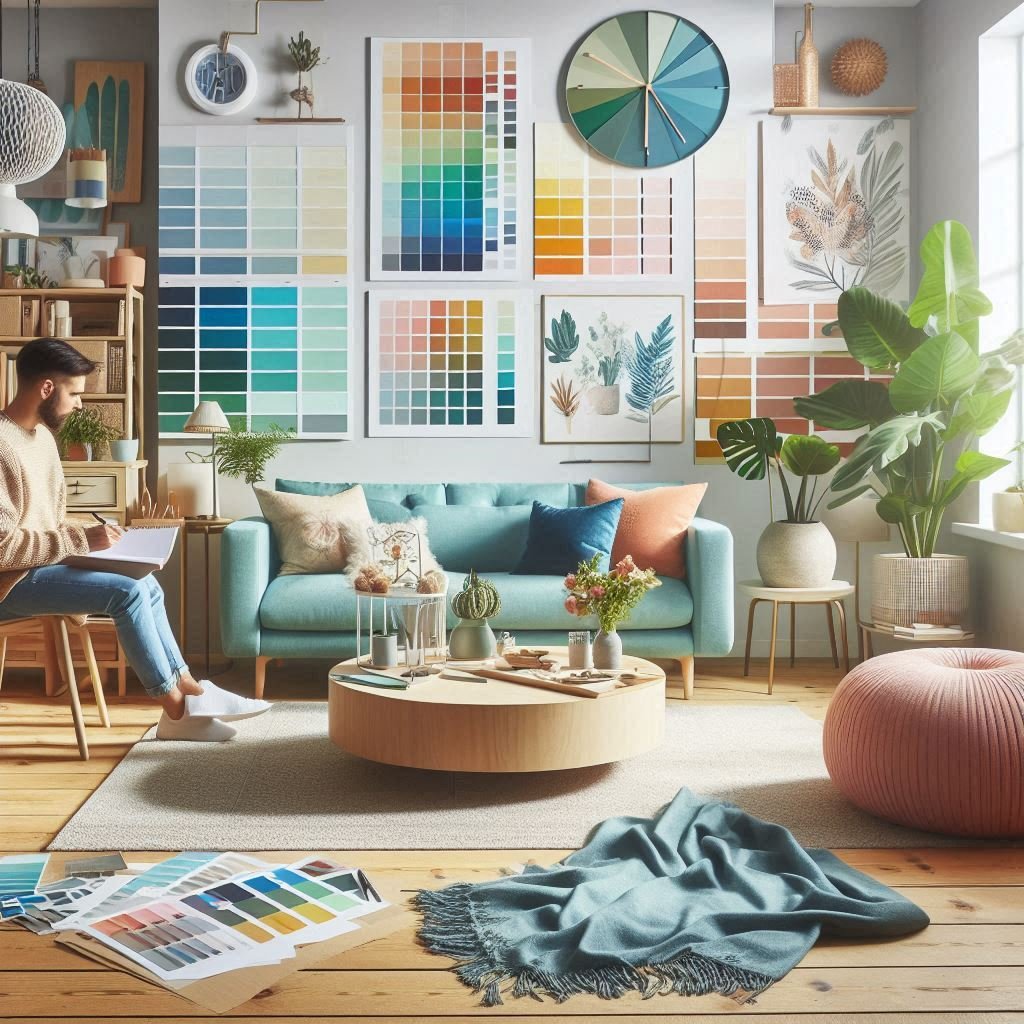choosing the right colors
Selecting the right color palette for your space can significantly impact its aesthetics and mood. Whether you’re designing a cozy home, a vibrant office, or a serene bedroom, the colors you choose play a crucial role in defining the ambiance. Here’s a guide to help you select colors that enhance aesthetics and create the desired mood for different types of spaces.
1. Understand Color Psychology
Colors evoke emotions and can influence the mood of a room. Here are some basic principles of color psychology to consider:
- Warm Colors (Red, Orange, Yellow): These colors are stimulating and energetic, perfect for spaces where you want to promote activity and social interaction, such as living rooms and kitchens.
- Cool Colors (Blue, Green, Purple): These colors have a calming effect, making them ideal for bedrooms, bathrooms, and spaces where relaxation is key.
- Neutral Colors (White, Gray, Beige): Neutrals create a balanced and serene environment. They are versatile and can be used in any space to provide a backdrop for other colors and décor elements.
2. Consider the Room’s Function
Think about how the room will be used and select colors that support its function:
- Living Room: Choose warm, inviting colors like soft yellows, warm grays, or earthy tones to create a welcoming space for family and guests.
- Kitchen: Opt for stimulating colors such as shades of red, orange, or bright white to promote energy and cleanliness.
- Bedroom: Use cool and soothing colors like blues, greens, or lavender to foster relaxation and restful sleep.
- Home Office: Select colors that boost productivity and focus, such as muted blues, greens, or even a pop of yellow.
3. Evaluate Lighting
The amount and type of light in a room can affect how colors appear:
- Natural Light: Rooms with abundant natural light can handle a wider range of colors. Bright and bold hues often look more vibrant, while soft colors can appear more subdued.
- Artificial Light: Consider the type of artificial lighting (incandescent, fluorescent, LED) as it can change the perception of color. Test paint samples under different lighting conditions before making a final decision.
4. Use the 60-30-10 Rule ( choosing the right colors )
This classic interior design rule helps create a balanced color scheme:
- 60% Dominant Color: The main color used in the room, typically for walls and large furniture pieces.
- 30% Secondary Color: A complementary color used for upholstery, curtains, or rugs.
- 10% Accent Color: A bold or contrasting color used sparingly for accessories like pillows, artwork, or decorative items.
5. Create a Color Flow
Ensure a harmonious transition between rooms by choosing colors that complement each other:
- Use a consistent color palette throughout your home to create a sense of unity.
- For open-plan spaces, select colors that blend well and enhance the overall flow of the area.
6. Test Before You Commit to choosing the right colors
Before finalizing your color choices, test them out:
- Paint small sections of your walls with your chosen colors and observe how they look at different times of the day.
- Consider using peel-and-stick paint samples to visualize the colors in your space without committing immediately.


